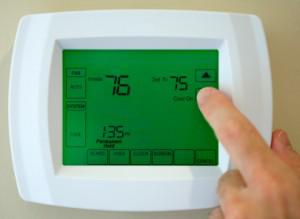The Types of Central Heating Systems and How They Do What They Do
The three common central heating systems are furnaces, boilers, and heat pumps. All three are used in homes throughout the nation to heat up and cool off homes. However, in order to find the best fit for you and your family, it's important to know the different types of central heating systems and how they do what they do.

Furnaces
Furnaces are the most common form of central heating system used in North America. A furnace is an appliance that heats up air and blows it through the ducts via air registers or grills. A furnace can be powered by electricity, natural gas, or fuel oil.
Boilers
Boilers heat up homes the same way that furnaces do. But instead of heating air, boilers heat water. The hot water is then distributed through a radiator or another device throughout the home. Most of the boiler systems found in homes are powered by natural gas, heating oil, or fuel.
Heat Pump
A heat pump is simply an air conditioning unit operating in reverse. In the summer, heat pumps or AC units cool off homes by removing the hot air from the home and pushing it outside. In the winter, they heat up the home by removing the cold air from the home and pushing it outside. The two most common heat pumps are ground-source heat pumps that use the heat from the ground, and air-source heat pumps that use the heat from the outside air. All three central heating systems come with a list of pros and cons. Some of them can be used more efficiently in certain areas, while others can't. To be sure you're getting the best bang for your buck, talk to an expert by calling our office at (706) 914-1617 or contacting us online.
